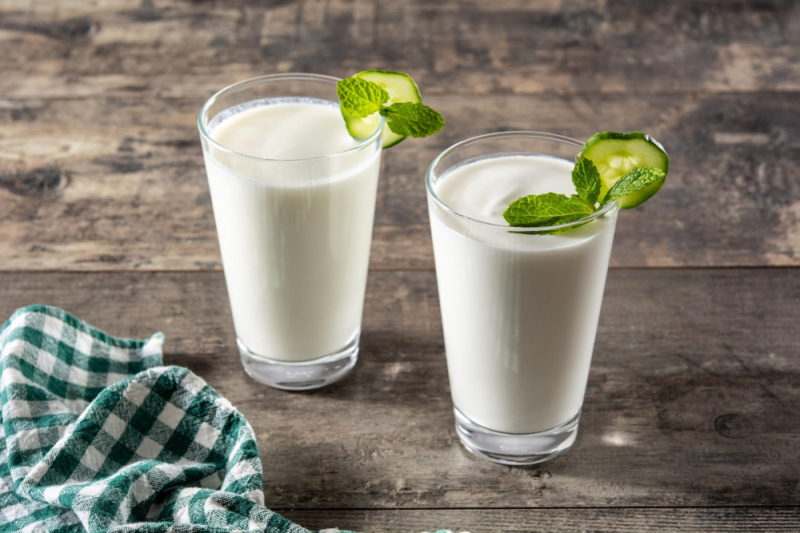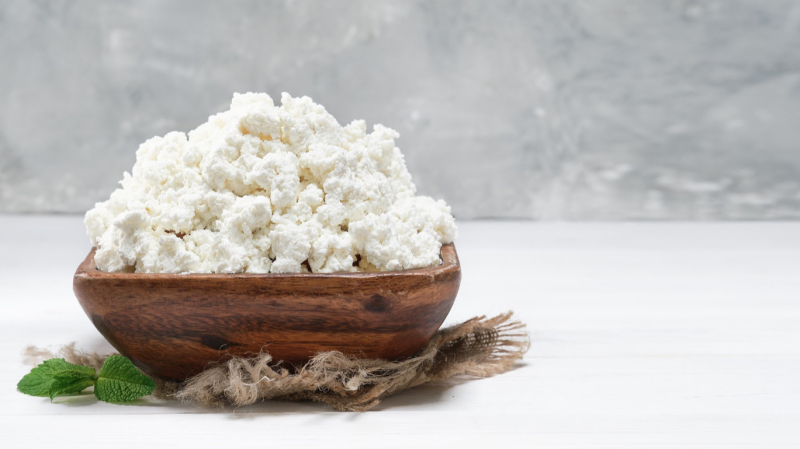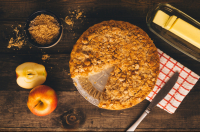Tvorog
Now, tvorog (творог) is something that barely needs an introduction – it’s an ingredient so adored that we’ve even written a whole article about it!
A type of quark cheese, this grainy, sour-ish product comes in many varieties and has plenty of culinary uses. Apart from being the main ingredient of syrniki (scrumptious fried cheesecakes), it can be consumed as-is, with toppings – such as berries and jam – or in a childhood-favorite format as a chocolate-glazed bar (syrok).

Syrniki with sour cream and berries. Credit: Max Nayman (@maxniceman) via Unsplash
Baked milk
Baked milk, or топленое молоко, may sound like nonsense: how do you bake milk?!
In truth, the name refers to the way it’s made, which is by slowly simmering milk for hours on end until it acquires a color almost similar to chocolate milk, but with a taste reminiscent of caramel – making it, among other things, an excellent addition to tea or coffee.
Lactose (or dairy in general) not your friend? Worry not. These days, almost all of these products are available in lactose-free or vegan versions. Refer to our vegan stores guide for tips. Find even more info via our Vegan tag.
Kefir
Though not originally Russian (the name is thought to originate from the North Caucausus), kefir (кефир) is a drink that, one could say, is integral to Russian culture.
A cousin of yogurt, this fermented, slightly fizzy drink can accompany any meal and pairs especially well with pastries or fried foods. Feeling fancy? Try it with some herbs and a dash of salt. Making Russian bliny? Use kefir instead of milk to achieve that iconic lacy look!

Kefir. Credit: ededchechine via Freepik
Ryazhenka
Slightly similar to kefir, ryazhenka (ряженка) can be distinguished by its pleasantly sweet taste, which it owes to the production process. Made from baked milk, it is therefore quite similar in taste, but much thicker and with a zing added by the fermentation process. Besides having plenty of culinary uses in baking, it’s greatly enjoyable just on its own.
…and more
These are, of course, only a few of the many, many dairy products you’ll find in Russian stores. It’s easy to get bogged down in the differences between them all, so we’ll just strongly advise you to try each one for yourself. When you’re ready to expand your culinary horizons, we suggest also trying the following: prostokvasha (простокваша), varenets (варенец), acidophiline (ацидофилин), snezhok (снежок), ayran (айран), and syvorotka (сыворотка).
For other food stories, check out our guide to Russian kashas, the strangest Russian desserts, and our students’ favorite quick lunches. Use the Food tag to discover even more!




